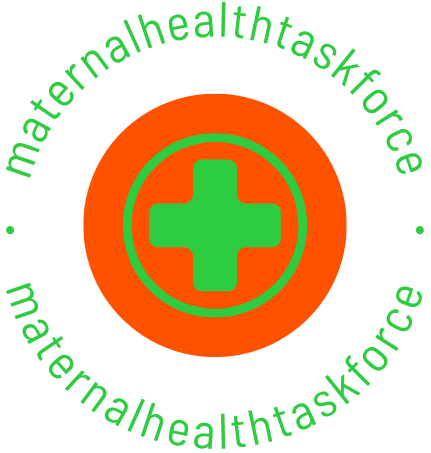Creating a birth plan is an essential step in preparing for your labor and delivery experience. A well-thought-out plan can help you communicate your preferences, reduce stress, and ensure that your birthing team understands your wishes. While labor can be unpredictable, having a guide for what you hope will happen during childbirth is incredibly beneficial. In this post, we’ll cover important factors to consider when developing your birth plan.

Deciding on a Birth Location
The first decision in your birth plan is where you want to give birth. Different birth settings offer unique experiences, so it’s crucial to choose the one that aligns with your comfort level and preferences:
- Hospital birth: Many women opt for hospital births due to the availability of medical staff and equipment. Hospitals provide access to epidurals, monitoring, and immediate care for both mother and baby in case of emergencies.
- Birthing center: Birthing centers offer a more home-like environment, emphasizing natural births with less medical intervention. They are often staffed by midwives and provide a more intimate, personalized experience.
- Home birth: For those seeking maximum comfort and familiarity, a home birth may be an option. If you are low-risk and prefer a natural birth, home births can offer a relaxed environment. However, it’s essential to have a skilled midwife or healthcare provider present to ensure safety.
Pain Management Preferences
Pain management is a critical element of labor, and knowing your preferences beforehand can guide your birthing team:
- Natural pain relief: If you prefer a medication-free birth, techniques like breathing exercises, meditation, water immersion, and massage can help manage pain. Including these preferences in your birth plan ensures your team knows you want to avoid medication unless necessary.
- Medicated pain relief: Many women choose options like epidurals, nitrous oxide, or IV pain medications to manage labor pain. If you’re open to these options, state whether you’d prefer to request medication or if you’d like to discuss it when the time comes.
- Flexible approach: Birth plans don’t need to be set in stone. If you’re unsure how you’ll feel in labor, you can express a preference for starting naturally but remain open to pain relief options if necessary.
Who You Want in the Delivery Room
Having the right support team during labor is crucial to your emotional well-being. Consider who you want by your side:
- Partner or family member: Many women choose to have their spouse, partner, or a close family member present. Be clear about who you want in the room for support, including during labour and the actual delivery.
- Doula: A doula provides emotional, physical, and informational support throughout labour. If you plan to have a doula, include them in your birth plan so the hospital or birth centre staff know their role in your care.
- Limiting visitors: Some mothers prefer a quiet environment with only key people present. If you want to limit visitors, specify this in your plan to ensure privacy.
Labor and Delivery Positions
Different labor positions can aid in comfort and progression. Some mothers want the freedom to move during labor, while others prefer traditional positions. Common preferences include:
- Walking or standing: Movement during labor can encourage the baby’s descent and relieve discomfort.
- Squatting or using a birthing stool: These positions help open the pelvis, which can speed up delivery.
- Lying down or semi-reclining: Some women prefer to lie down, especially if they have an epidural or need medical monitoring.
Your birth plan should mention if you prefer mobility during labor and whether you want to explore different positions for pushing.
Preferences for Medical Interventions
It’s important to state your preferences about potential medical interventions, even though they may not always be avoidable:
- Induction of labor: Some women prefer to let labour begin naturally, while others are open to or plan on induction, especially if it’s medically recommended.
- Assisted delivery: Tools like forceps or vacuum extraction may be necessary to help with delivery. If you have preferences about avoiding these interventions, mention them, while also being open to the medical team’s judgment in emergencies.
- Episiotomy: This surgical cut may be needed to prevent tearing. If you prefer to avoid an episiotomy unless absolutely necessary, include this in your plan.
C-Section Considerations
While many women plan for vaginal delivery, C-sections are sometimes required for the safety of mother and baby. Including C-section preferences in your birth plan ensures you’re prepared for the possibility:
- Planned vs. emergency C-section: If you know a C-section is likely due to medical reasons, detail any specific preferences, such as who should be present, whether you want skin-to-skin contact immediately after birth, and your desired level of involvement (like seeing the birth via mirror).
- Post-surgery care: Include any wishes about breastfeeding or bonding with your baby immediately after surgery, as well as how you’d like to be informed about decisions made during an emergency.
Post-Birth Preferences
Once your baby is born, you may have preferences about how things are handled immediately after delivery:
- Skin-to-skin contact: Many mothers want immediate skin-to-skin contact to promote bonding and regulate the baby’s body temperature.
- Delayed cord clamping: Some parents prefer to wait before cutting the umbilical cord, as delaying clamping for a minute or two can increase the baby’s iron levels.
- Feeding: If you plan to breastfeed, mention whether you’d like help from a lactation consultant. If formula feeding, specify that preference as well.
Conclusion
Creating a labour plan empowers you to outline your preferences and helps your birthing team understand your wishes. While childbirth is unpredictable, having a flexible but clear plan in place can make the process smoother and less stressful. Always remember to discuss your plan with your healthcare provider to ensure it aligns with medical best practices and your specific health needs.











